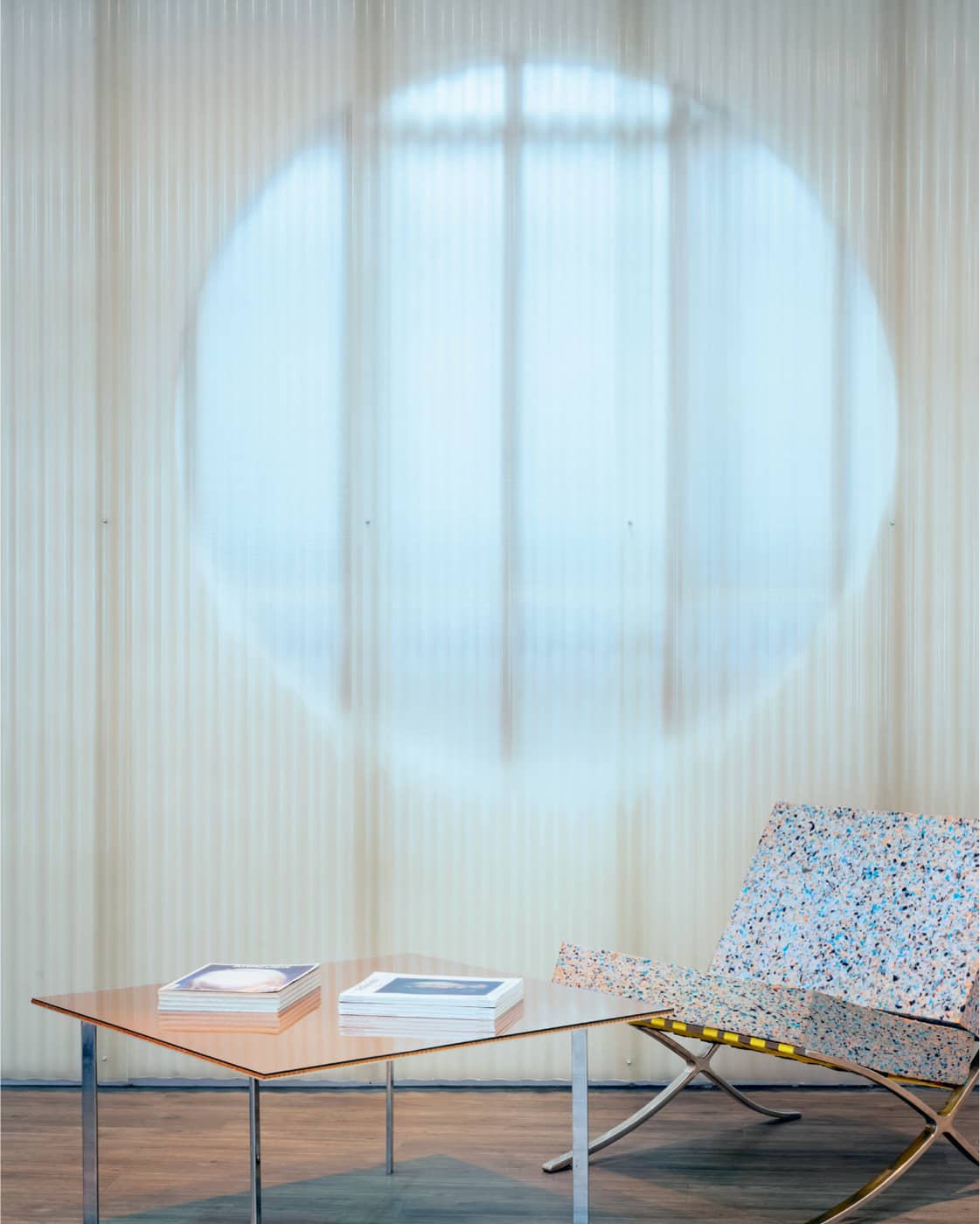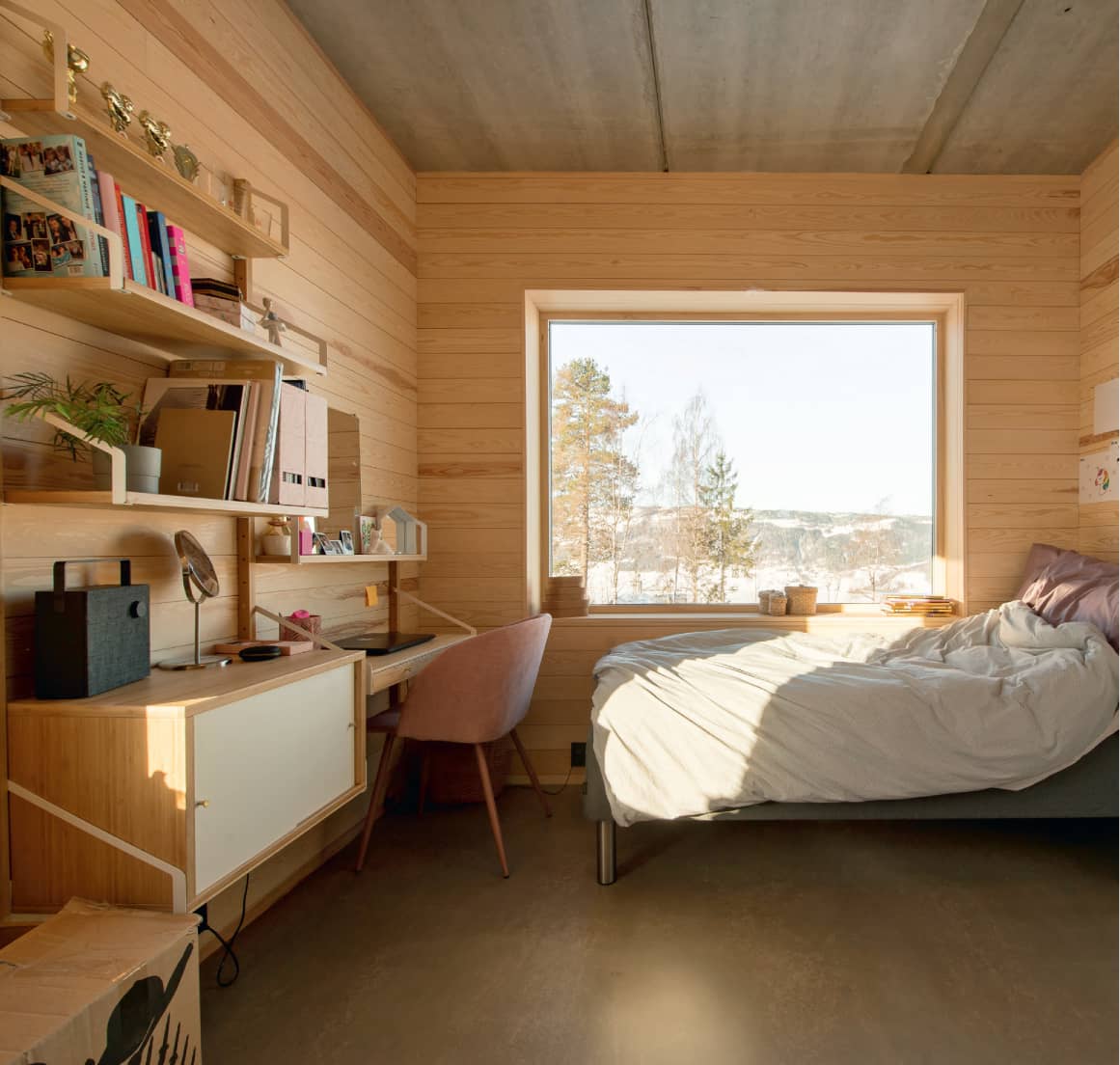25 Depth
The distance from top to bottom or front to back.
Usable space is at a premium in most projects, and depth, both real and implied, has the ability to make small spaces seem larger, make entrances more emphatic, or create opportunities for seating and rest in places carved into windows, walls, floors, or ceilings.
Depth can also be emphasized through the layering of elements, or by using dark colors or reflective surfaces. Painting a wall a deep shade can visually push that element further away from the viewer. Reflective surfaces, mirrors, or translucent surfaces can add implied space to a wall surface—especially when luminous materials are used, or backlighting creates the illusion of space.
Niches, alcoves, thresholds, open cabinets, and shelving are all ways to enhance spatial depth, and changes in elevation—either in a floor or ceiling plane—can add unexpected heights to a volume. Revealing depth in a surface is also an opportunity for cove lighting, wall wash illumination, and ambient light solutions.

The depth of walkways to hold bookshelves and books, the uplit arches of the ceiling and accentuate volume, the open circulation and natural light gives a sense of layer and depth to this room at the Rijksmuseum in Amsterdam.

Sam Jacob Studio’s office for ArtReview incorporates translucent materials to add depth to a wall.

Oslo studio Sanden+Hodnekvam Arkitekter’s use of open shelving and windows adds spatial depth to rooms in this housing project in Lillehammer.
